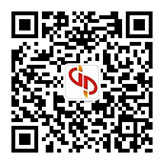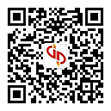试卷简介
试卷预览
Part I Writing (30 minutes)
Directions: For this part, you are allowed 30 minutes to write a short essay about a classmate of yours who has influenced you most in college. You should state the reasons and write at least 120 words but no more than 180 words.
Part Ⅱ Listening Comprehension (30 minutes)http://pan.baidu.com/s/1jG5mjpO
Section A
Directions: In this section, you will hear 8 short conversations and 2 long conversations. At the end of each conversation, one or more questions will be asked about what was said. Both the conversation and the questions will be spoken only once. After each question there will be a pause. During the pause, you must read the four choices marked A), B), C) and D), and decide which is the best answer. Then mark the corresponding letter on Answer Sheet 1 with a single line through the centre.
2
A) She will go purchase the gift herself.
B) The gift should not be too expensive.
C) The man is not good at balancing his budget.
D) They are going to Jane's house-warming party.
3
A) It takes patience to go through the statistics.
B) He has prepared the statistics for the woman.
C) The woman should take a course in statistics.
D) He is quite willing to give the woman a hand.
4
A) The man wants to make some change in the scripts.
B) The woman does not take the recording seriously.
C) They cannot begin their recording right away.
D) Page 55 is missing from the woman's scripts.
5
A) A significant event in July.
B) Preparations for a wedding.
C) The date of Carl's wedding.
D) The birthday of Carl's bride.
6
A) The man was in charge of scheduling meetings.
B) The man was absent from the weekly meeting.
C) They woman was annoyed at the man's excuse.
D) The woman forgot to tell the man in advance.
7
A) The woman is a marvelous cook.
B) The man cannot wait for his meal.
C) The woman has just bought an oven.
D) The man has to leave in half an hour.
8
A) Whether the man can keep his job.
B) Where the man got the bad news.
C) What items sell well in the store.
D) How she can best help the man.
9
A) The woman can sign up for a swimming class.
B) He works in the physical education department.
C) The woman has the potential to swim like a fish.
D) He would like to teach the woman how to swim.
Questions 10 to 12 are based on the conversation you have just heard.
A) He teaches in a law school.
B) He loves classical music.
C) He is a diplomat.
D) He is a wonderful lecturer.
11
A) Went to see a play.
B) Watched a soccer game.
C) Took some photos.
D) Attended a dance.
12
A) She decided to get married in three years.
B) Her mother objected to Eric's flying lessons.
C) She insisted that Eric pursue graduate studies.
D) Her father said she could marry Eric right away.
Questions 13 to 16 are based on the conversation you have just heard.
A) Editor.
B) Teacher.
C) Journalist.
D) Typist.
14
A) The beautiful Amazon rainforests.
B) A new railway under construction.
C) Big changes in the Amazon valley.
D) Some newly discovered scenic spot.
15
A) In news weeklies.
B) In newspapers' Sunday editions.
C) In a local evening paper.
D) In overseas editions of U.S. magazines.
16
A) To be employed by a newspaper.
B) To become a professional writer.
C) To sell her articles to news service.
D) To get her life story published soon.
Section B
Directions: In this section, you will hear 3 short passages. At the end of each passage, you will hear some questions. Both the passage and the questions will be spoken only once. After you hear a question, you must choose the best answer from the four choices marked A), B), C) and D). Then mark the corresponding letter on Answer Sheet 1 with a single line through the centre.
Passage One
Questions 17 to 19 are based on the conversation you have just heard.
A) Nodding one's head.
B) Waving one's hand.
C) Holding up the forefinger.
D) Turning the right thumb down.
18
A) Looking away from them.
B) Forming a circle with fingers.
C) Bowing one's head to them.
D) WDaving or pointing to them.
19
A) Looking one's superior in the eye.
B) Keeping one's arms folded while talking.
C) Showing the sole of one's foot to a guest.
D) Using a lot of gestures during a conversation.
Passage Two
Questions 20 to 22 are based on the passage you have just heard.
A) They had to beg for food after the harvest.
B) They grew wheat and corn on a small farm.
C) They shared a small flat with their relatives.
D) The children walked to school on dirt roads.
21
A) Tour Ecuador's Andes Mountains.
B) Earn an animal income of $2,800.
C) Purchase a plot to build a home on.
D) Send their children to school.
22
A) The achievements of the Trickle Up Program.
B) A new worldwide economic revolution.
C) Different forms of assistance to the needy.
D) The life of poor people in developing countries.
Passage Three
Questions 23 to 26 are based on the passage you have just heard.
A) They are highly sensitive to cold.
B) They are vitally important to our life.
C) They are a living part of our body.
D) They are a chief source of our pain.
24
A) It has to be removed in time by a dentist.
B) It is a rare oral disease among old people.
C) It contains many nerves and blood vessels.
D) It is a sticky and colorless film on the teeth.
25
A) It can change into acids causing damage to their outer covering.
B) It greatly reduces their resistance to the attacks of bacteria.
C) It makes their nerves and blood vessels more sensitive to acid food.
D) It combines with food particles to form a film on their surface.
26
A) Food particles.
B) Gum disease.
C) Unhealthy living habits.
D) Chemical erosion.
Section C
Direction: In the section, you will hear a passage three times. When the passage is read for the first time, you should listen carefully for its general idea. When the passage is read for the second time, you are required to fill in the blanks with the exact words you have just heard. Finally, when the passage is read for the third time, you should check what you have written.
Stunt people (替身演员) are not movie stars, but they are the hidden heroes of many movies.
They were around long before films. Even Shakespeare may have used them in fight scenes. To be good, a fight scene has to look real. Punches must __26__ enemies'jaws. Sword fights must be fought with __27__ swords. Several actors arc usually in a fight scene. Their moves must be set up so that no one gets hurt. It is almost like planning a dance performance.
If a movie scene is dangerous, stunt people usually __28__ the stars. You may think you see Tom Cruise running along the top of a train. But it is __29__ his stunt double. Stunt people must __30__ the stars they stand in for. Their height and build should be about the same. But when close-ups are needed, the film __31__ the star. Some stunt people __32__ in certain kinds of scenes. For instance, a stunt woman named Jan Davis does all kinds of jumps. She has leapt from planes and even off the top of a waterfall. Each jump required careful planning and expert __33__.
Yakima Canutt was a famous cowboy stunt man. Among other stunts, he could jump from a second story window onto a horse's back. He __34__ the famous trick of sliding under a moving stagecoach. Canutt also __35__ a new way to make a punch look real. He was the only stunt man ever to get an Oscar.
第(26)题
第(27)题
第(28)题
第(29)题
第(30)题
第(31)题
第(32)题
第(33)题
第(34)题
第(35)题
Part Ⅲ Reading Comprehension (40 minutes)
Section A
Directions: In this section, there is a passage with ten blanks. You are required to select one word for each blank from a list of choices given in a word bank following the passage. Read the passage through carefully before making your choices. Each choice in the bank is identified by a letter. Please mark the corresponding letter on Answer Sheet 2 with a single line through the centre. You may not use any of the words in the bank more than once.
Questions 36 to 45 are based on the following passage.
As an Alaskan fisherman, Timothy June, 54, used to think that he was safe from industrial pollutants (污染物) at his home in Haines — a town with a population of 2,400 people and 4,000 eagles, with 8 million acres of protected wild land nearby. But in early 2007, June agreed to take part in a __36__ of 35 Americans from seven states. It was a biomonitoring project, in which people's blood and urine (尿) were tested for __37__ of chemicals — in this case, three potentially dangerous classes of compounds found in common household __38__ like face cream, tin cans, and shower curtains. The results — __39__ in November in a report called "Is It in Us?" by an environmental group — were rather worrying. Every one of the participants, __40__ from an Illinois state senator to a Massachusetts minister, tested positive for all three classes of pollutants. And while the __41__ presence of these chemicals does not __42__ indicate a health risk, the fact that typical Americans carry these chemicals at all __43__ June and his fellow participants.
Clearly, there are chemicals in our bodies that don't __44__ there. A large, ongoing study conducted by the Centers for Disease Control and Prevention has found 148 chemicals in Americans of all ages. And in 2005, the Environmental Working Group found an __45__ of 200 chemicals in the blood of 10 new-borns. "Our babies are being born pre-polluted," says Sharyle Patton of Commonweal, which cosponsored "Is It in Us?" "This is going to be the next big environmental issue after climate change."
A) analyses
B) average
C) belong
D) demonstrated
E) excess
F) extending
G) habitually
H) necessarily
I) products
J) ranging
K) released
L) shocked
M) simple
N) survey
O) traces
第(36)题选
第(37)题选
第(38)题选
第(39)题选
第(40)题选
第(41)题选
第(42)题选
第(43)题选
第(44)题选
第(45)题选

 最新推荐
最新推荐
 相关试卷
相关试卷

 原创试题专区
原创试题专区 开通学校服务
开通学校服务






